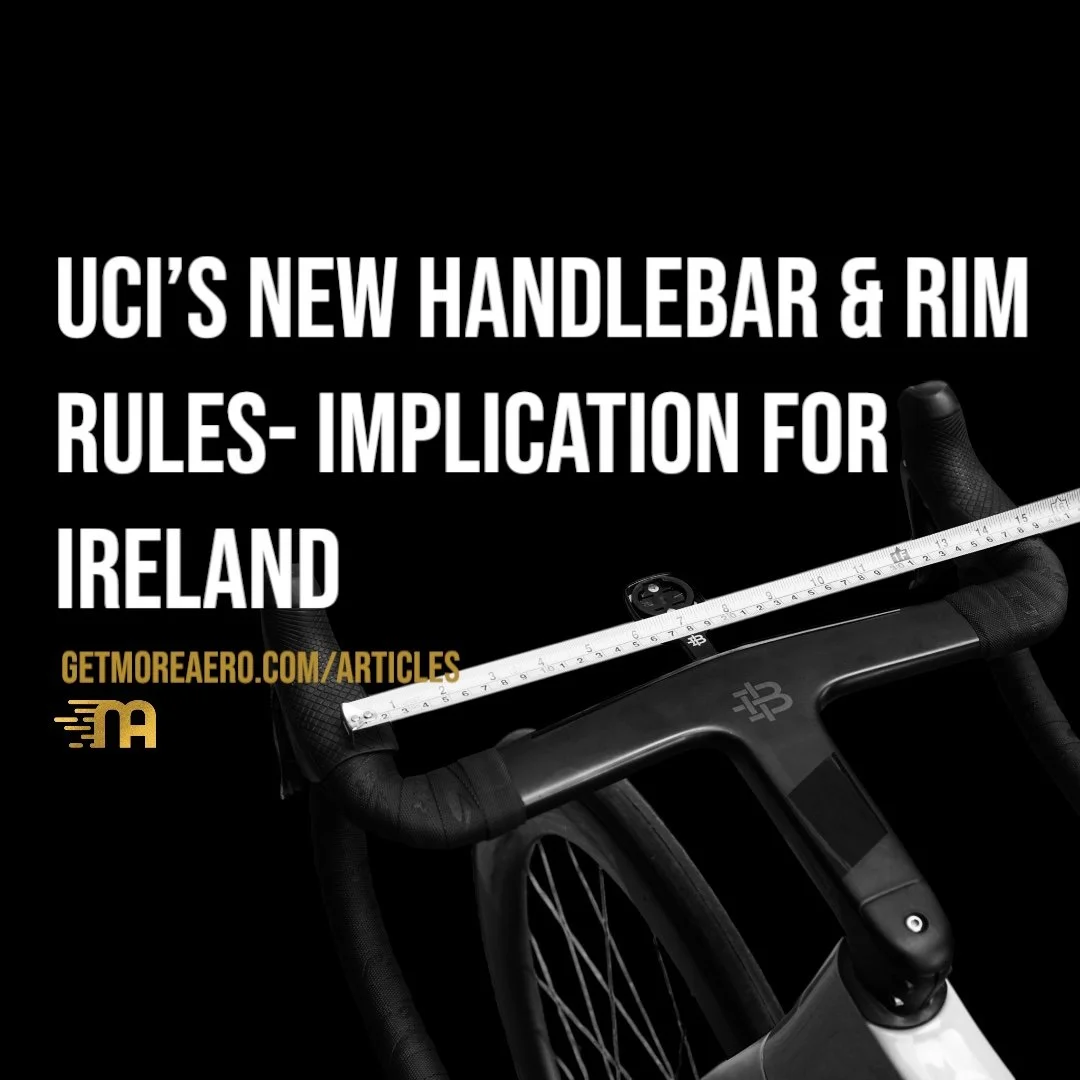UCI’s New Equipment Rules Could Hit Irish Riders Hard for 2026
The UCI’s latest handlebar and rim depth regulations are shaking up the cycling world — and could leave Irish riders facing costly upgrades ahead of 2026. While Australia, Britain, and the U.S. have refused to adopt the new rules domestically, Cycling Ireland has yet to confirm its stance. Will these changes be enforced at every Irish race, or will local riders be spared?
UCI’s New Handlebar & Rim Rules: What They Mean for Irish Riders in 2026
AIGLE, Switzerland (October 2025) — The Union Cycliste Internationale (UCI) has confirmed sweeping new equipment regulations that will reshape the bikes used in road racing from 1 January 2026. The new limits on handlebar width and rim depth have already caused widespread debate, with several major federations — including AusCycling, British Cycling, and USA Cycling — stating they will not enforce the new standards for their domestic racing calendars.
That leaves Ireland in an uncertain position. Cycling Ireland has not yet announced whether it will follow the UCI’s 2026 rules or implement its own approach. The decision will have major implications for riders across the country — both in terms of compliance and cost.
The New Rules in Brief
Starting January 2026, UCI-licensed riders must adhere to the following:
Minimum handlebar width: 400 mm (outside-to-outside)
Minimum hood spacing: 280 mm between brake lever tips
Maximum rim depth: 65 mm in mass-start events
Maximum flare: 50 mm from hood to bar end
Frame and fork width limits: 115 mm front and 145 mm rear at the widest points
The UCI says the goal is to standardize rider positions for safety and fairness, claiming extreme narrow bars and ultra-deep rims increase risks and create unequal aerodynamic advantages. However, critics argue the changes are arbitrary, poorly timed, and financially damaging for everyday riders.
Financial Impact: What It Could Cost Irish Riders
For the average Irish rider, becoming compliant could be expensive. Many currently ride with narrow 36–38 cm bars and 60–80 mm deep wheelsets — both of which could be non-compliant under the new rules.
Typical Irish replacement costs:
• Carbon aero handlebars / integrated cockpit: €300–€700
• Stem or cockpit adjustment: €50–€150
• Wheelset (≤65 mm depth): €600–€2,500
• Labour and setup: €40–€120
• Miscellaneous (bar tape, fittings, adapters): €20–€80
Total estimated cost per bike: €1,000–€3,000
For many Irish cyclists, this is a significant financial burden. Riders who recently upgraded to deep-section carbon wheels or narrow aero cockpits could find their setups suddenly obsolete for competition. Another issue is resale value — older 80 mm wheelsets or 36 cm bars could plummet in value on the second-hand market, making the transition even costlier.
How to Check if Your Bike Is Compliant
If you’re unsure whether your current setup meets the 2026 UCI standards, here’s a quick guide:
Measure handlebar width — outside-to-outside at the ends of your drops. Minimum allowed: 400 mm.
Check hood spacing — between the center of each brake lever tip. Must be at least 280 mm apart.
Check wheel rim depth — from brake track (or tire bed) to the deepest part of the rim. Maximum: 65 mm.
Check handlebar flare — difference between hood width and drop-end width can’t exceed 50 mm total.
Frame width — most modern aero frames comply, but check manufacturer specs if in doubt.
Pro tip: If you race both domestically and internationally, build your bike to the stricter UCI standard to avoid future changes — especially if Cycling Ireland eventually aligns with the rule.
Will These Rules Be Enforced at Every Irish Race?
That’s the big question — and one that Cycling Ireland still hasn’t answered.
If Cycling Ireland decides not to follow the UCI’s new standards, then most club and national-level races would continue under current rules. However, riders competing in UCI-sanctioned events abroad or in international fields would still need compliant setups.
The uncertainty raises a key issue:
Will commissaires at every club, national, and open race be expected to measure bar widths and rim depths?
In countries like Australia, the UK, and the USA, cycling federations have already clarified that they will not apply these UCI changes at domestic level, arguing that enforcement would be impractical and unnecessary for amateur racing.
If Cycling Ireland follows that lead, Irish riders may be spared the expense — at least for local competition.
Waiting on Cycling Ireland
As of mid-October 2025, Cycling Ireland has yet to issue any public statement on whether it will enforce or delay adoption of the new UCI technical regulations for 2026.
The decision will shape the Irish cycling scene in practical and financial terms — from how bike shops stock components to how riders prepare for next season’s races.
With just a few months until the new rules take effect internationally, riders and event organizers in Ireland are waiting for clarity. For now, the best advice is to review your equipment, stay informed, and wait for Cycling Ireland’s official guidance before making any costly upgrades.
In summary: The UCI’s new equipment rules could reshape not just the pro peloton but every start line across Ireland. Whether they’ll actually apply here depends on what Cycling Ireland decides in the coming weeks. For now, stay alert — your 38 cm aero bars or deep-section wheels might soon be history.

